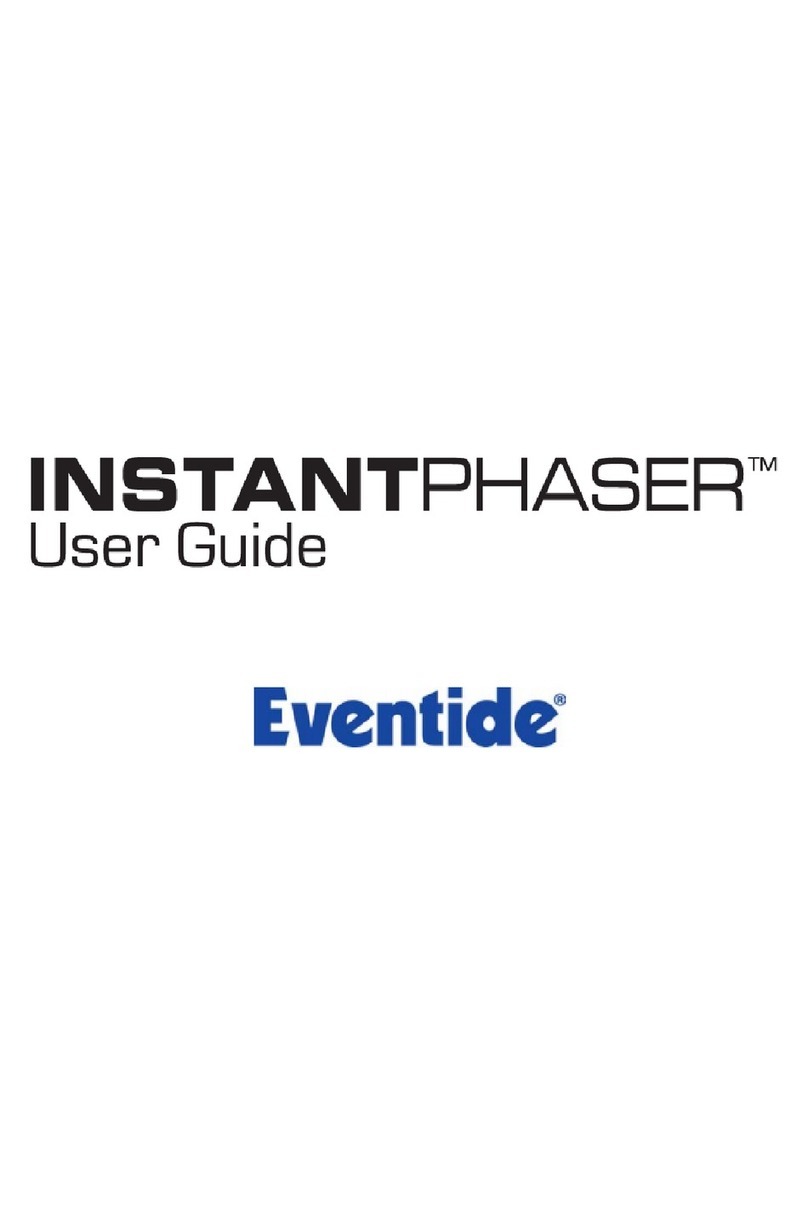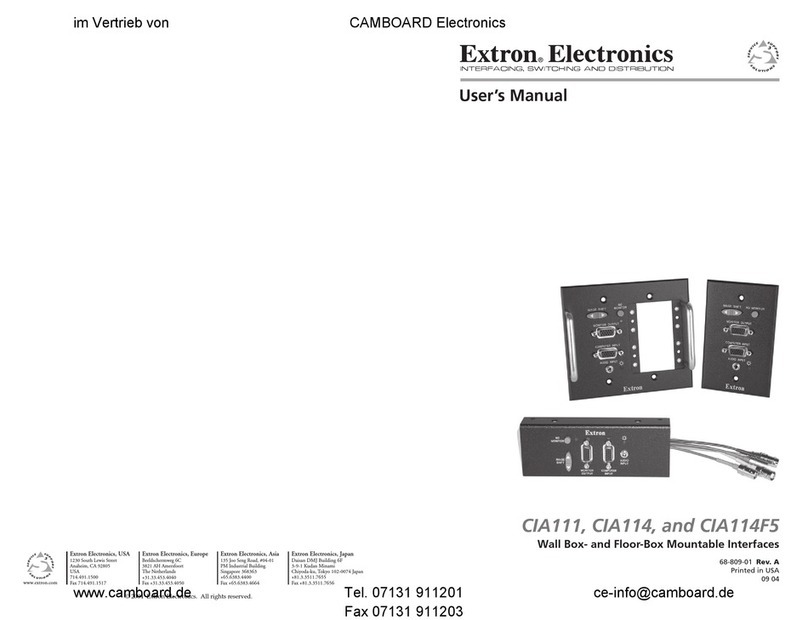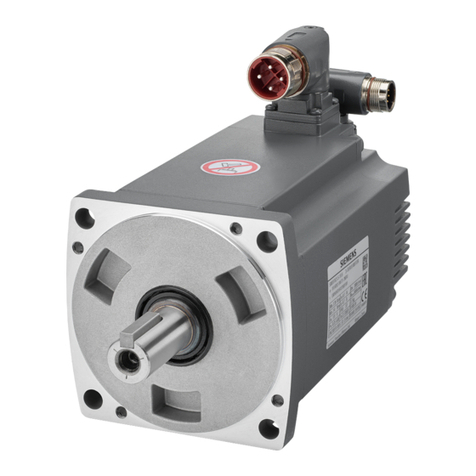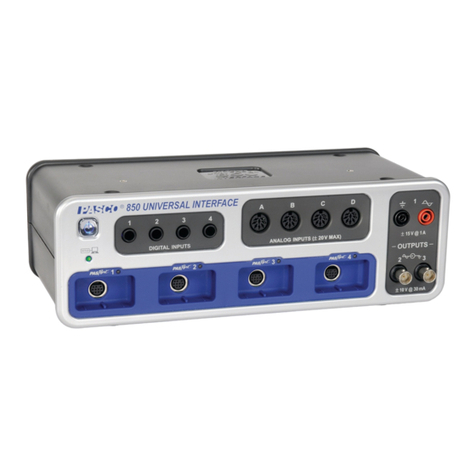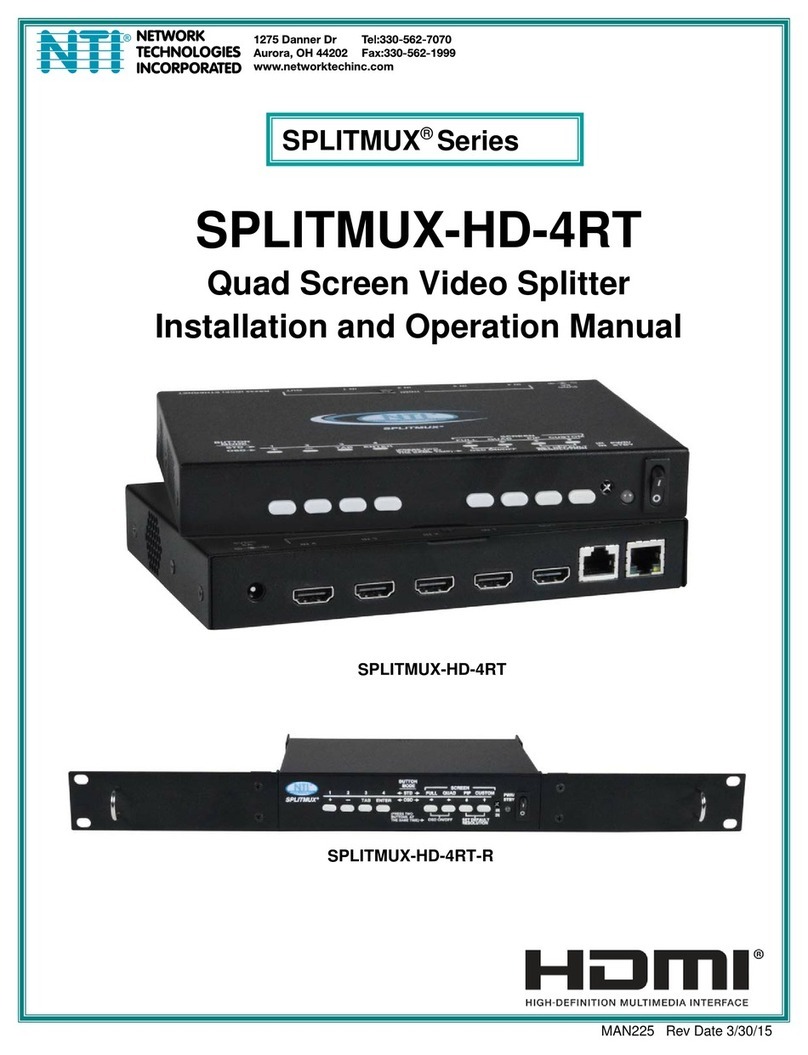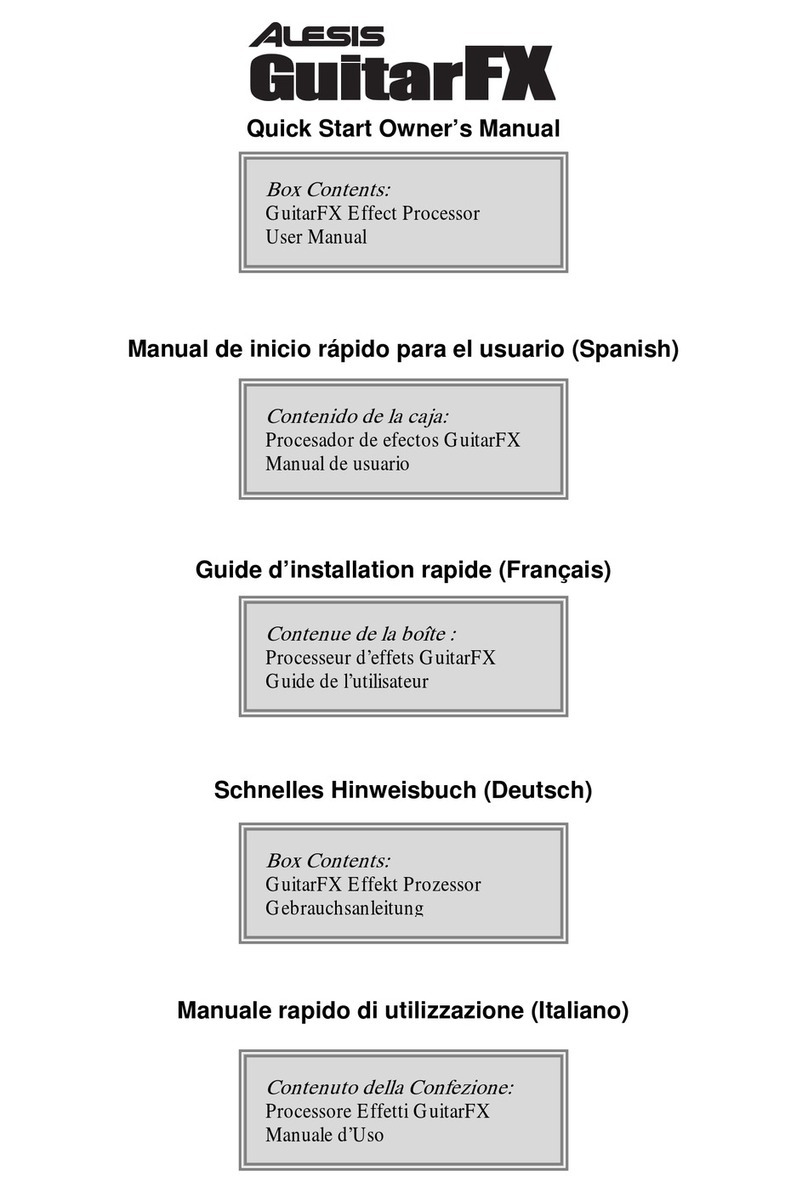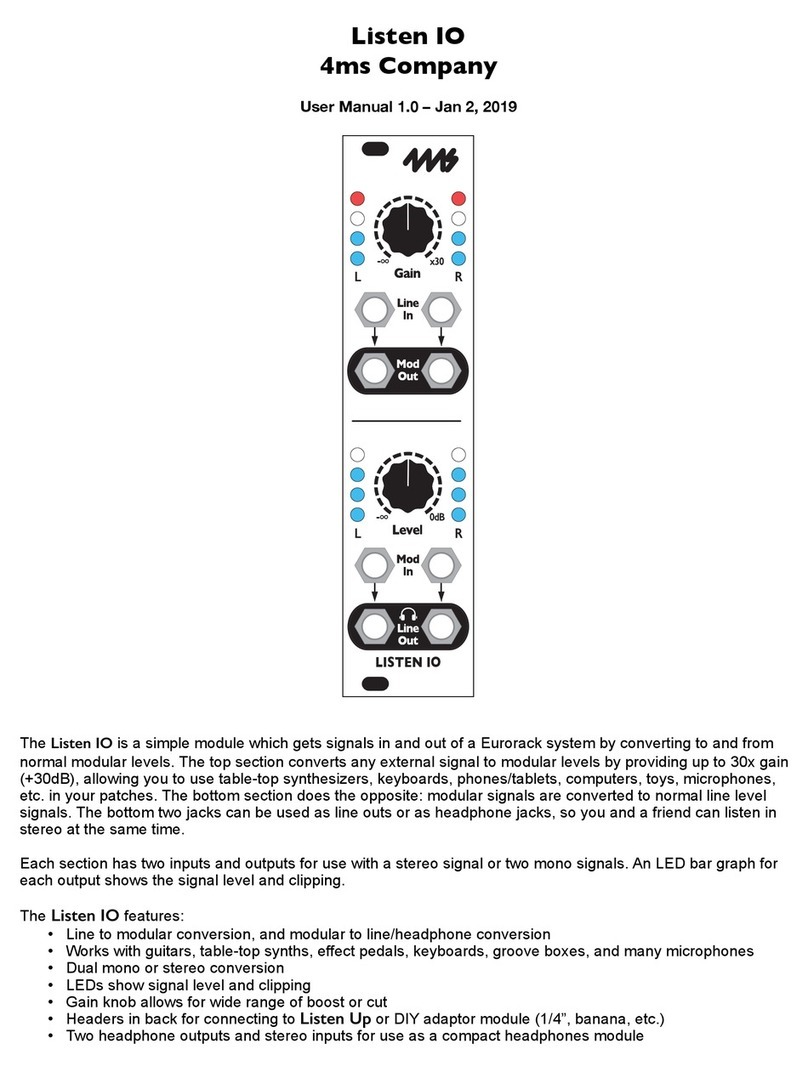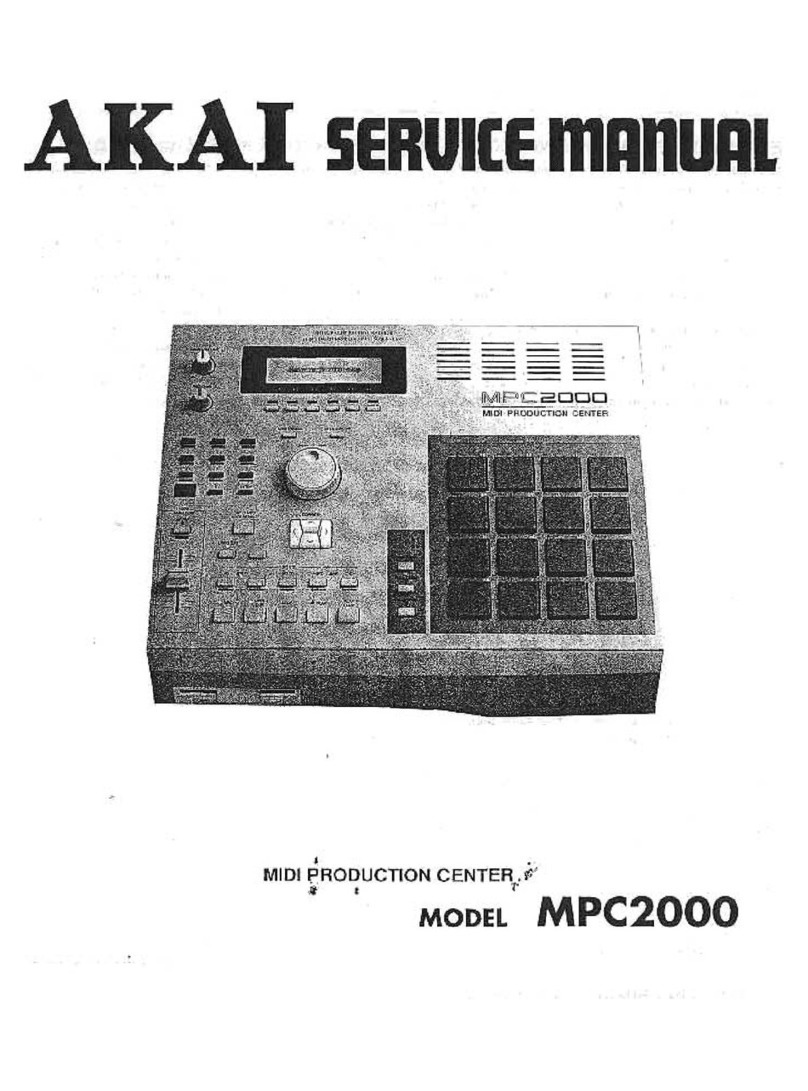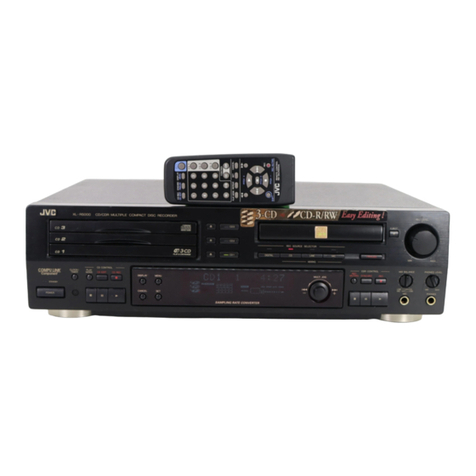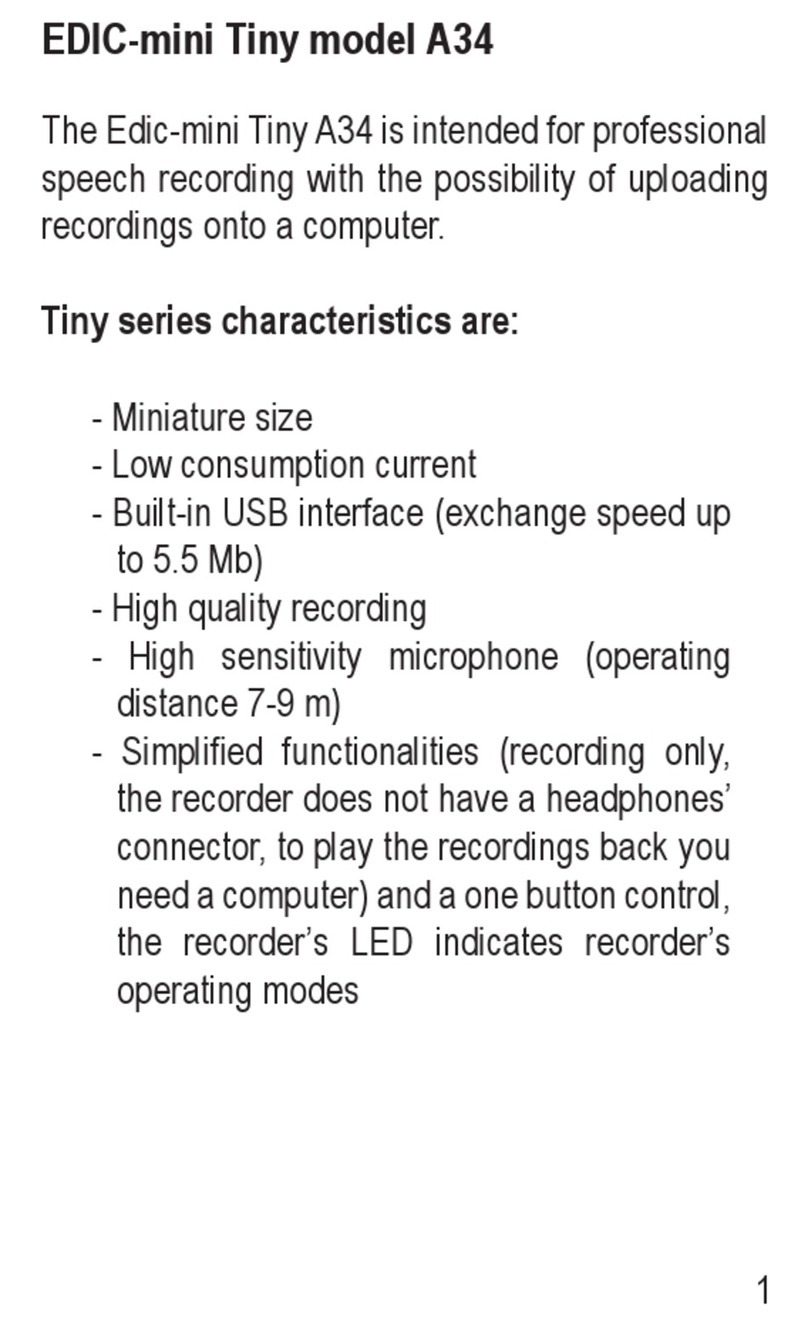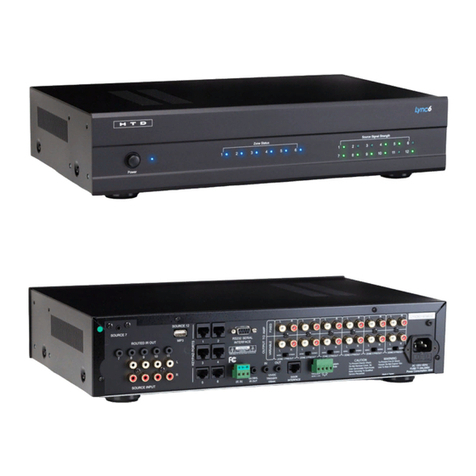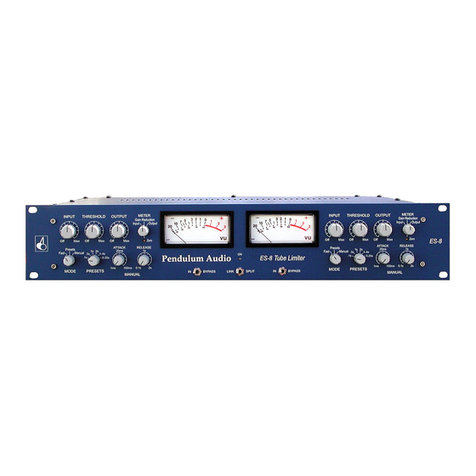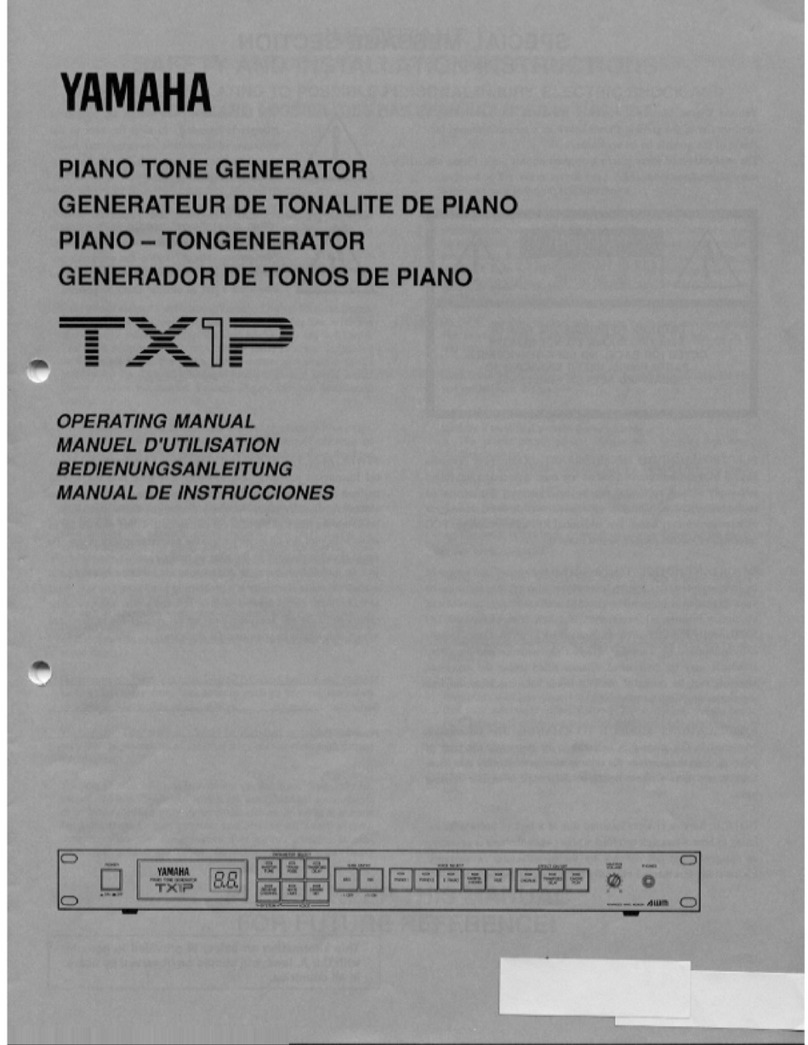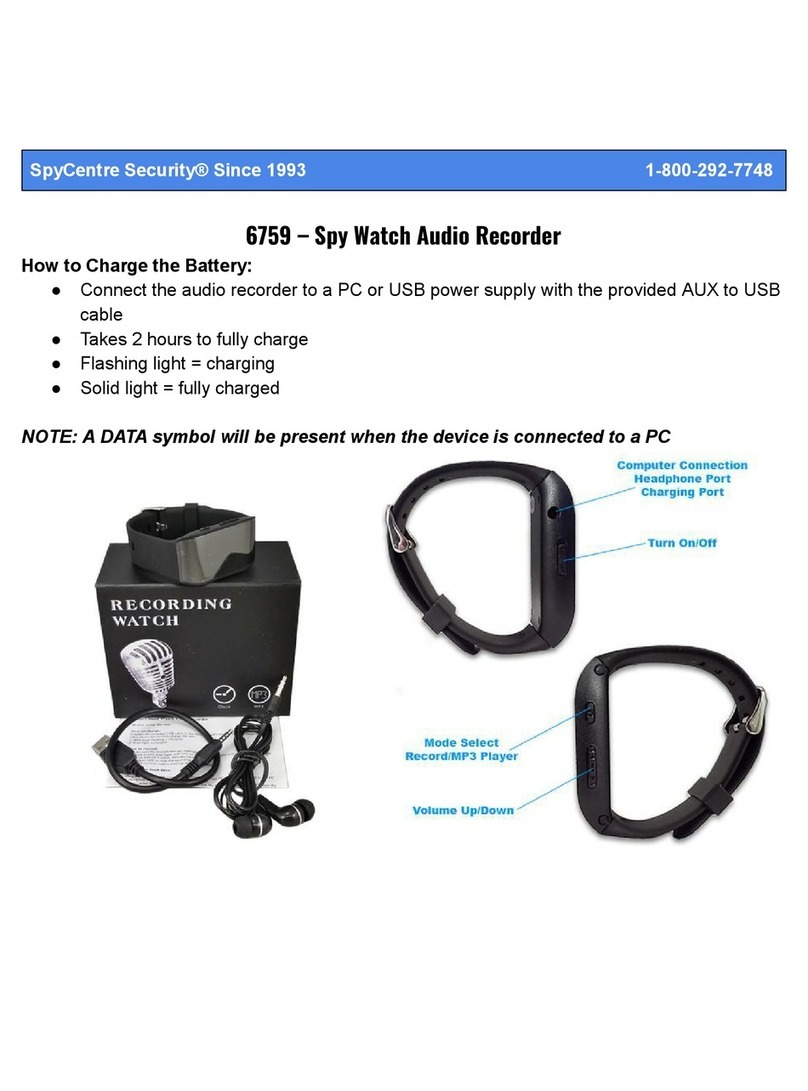AudioArts RD User manual

RD Digital Audio
Console
TECHNICAL MANUAL
March 2000

R-16 / Dec 1997
RD Digital Audio Console Technical Manual - 2nd EditionRD Digital Audio Console Technical Manual - 2nd Edition
RD Digital Audio Console Technical Manual - 2nd EditionRD Digital Audio Console Technical Manual - 2nd Edition
RD Digital Audio Console Technical Manual - 2nd Edition
©2000 Audioarts®Engineering*
AUDIOARTS ENGINEERING
600 Industrial Drive
New Bern, North Carolina 28562
252-638-7000
*a division of Wheatstone Corporation
RD/ May 2000

AA
AA
ATTENTIONTTENTION
TTENTIONTTENTION
TTENTION
RR
RR
READEAD
EADEAD
EAD MM
MM
MEE
EE
E!!
!!
!
RD / May 2000
Attention!
This console contains static sensitive devices:
Normal precautions against static discharge should be observed when
handlingindividualmodules.Inparticular, modulesbeingpackedforshipping
for return or repair must be packed in special static protection bags before
packaging. Damage caused by static discharge may not be covered under
warranty.
Replacing Modules in a Powered-up Console:
While in an emergency situation it is possible to remove and insert modules
on a powered-up console, Wheatstone does not recommend this procedure.
Whenever possible it is best to power down the console first before removing
or replacing modules.
However, if you find you must proceed with this operation, then be sure to
take the following precaution:
When re-inserting a module, take care to replug it squarely into its
mainframe connector socket, so all edgecard fingers make contact
simultaneously. In other words, the gold-plated bus connector fingers on the
bottom edge of the module's printed circuit board must be inserted squarely
(i.e., perpendicular) to the mating socket on the bottom pan of the console
mainframe. The intent is to prevent a situation where one of the module's
power pins makes significant contact before the others. (Naturally, this
same precaution must be taken when using extenders.)
Iftheaboveinstructionsarefollowedtheprocedureshouldberoutine;ifthey
are not, you could run the risk of damaging the console's logic chips.
Again, to avoid ANY possibility of this damage, whenever possible we
stronglyrecommendpoweringdowntheconsolebeforereplacinganymodules.
!

RR
RR
READEAD
EADEAD
EAD MM
MM
MEE
EE
E!!
!!
!
May 2000
Console Clock Battery Backup
Attention!
Console Clock Display Card
To activate battery backup of the console’s clock simply pull out the yellow
strip from the clock display card, that is mounted on the inside of console
meterbridge, as shown on the picture below.

Your Audioarts RD audio console is equipped with two
"module extractor tools" which are mounted underneath the
console armrest, to the far right (just above and to the left of
the righthand mainframe headphone jack).
Main module faceplates are held into the console mainframe by two
mounting screws (top and bottom). When removed the screws leave
specially threaded holes that accept the two extractor tools.
To remove a module faceplate from the mainframe:
Remove the front top and bottom mounting screws. Remove the extractor
tools from underneath the armrest, and screw each tool into a module
faceplate mounting hole. Use only four or five turns (do not over-insert; you
may damage the threaded mainframe hole underneath). Using the extractor
tools as handles, pull the module straight up out of the mainframe.
ModuleRemovalTools
EXTRACTOR TOOLS

page Contents – 1
RD / May 2000
CONTENTS
RD Technical Manual
Table of Contents
Chapter 1 – Installation and Power
CountertopMounting................................................................. 1-2
Clearances.............................................................................................................. 1-2
System Ground .......................................................................... 1-2
Power Supplies .......................................................................... 1-4
The PSC-D340 Power Supply ................................................................................ 1-5
Power Connector Pinout......................................................................................... 1-5
PSC-D340 Power Supply Schematic ...................................................................1-5A
The VU/Timer Cable ............................................................................................... 1-6
Energizing ............................................................................................................... 1-6
Audio and Control Wiring.......................................................... 1-7
ConnectionProcedures .......................................................................................... 1-7
Digital Audio Connections ...................................................................................... 1-7
Analog Insert Points................................................................................................ 1-7
Unbalanced Connections (analog audio) ............................................................... 1-8
Hand Crimp Tool Wiring Instructions...................................................................... 1-9
Chapter 2 - Mono Mic Inputs
Module Overview........................................................................ 2-2
Internal Programming Options ................................................. 2-3
Insert Bypass .......................................................................................................... 2-3
Phantom Power ...................................................................................................... 2-3
Mutes ...................................................................................................................... 2-3
Timer Restart .......................................................................................................... 2-3
Tallies...................................................................................................................... 2-4
Utility Bus Pre-Fader .............................................................................................. 2-4
Talkback.................................................................................................................. 2-4
Superphone Output Assign .................................................................................... 2-5
Hook-ups..................................................................................... 2-5
AUDIO CONNECTIONS......................................................................................... 2-5
CONTROL CONNECTIONS................................................................................... 2-6
Remote ON & OFF ................................................................................................. 2-6
Cough ..................................................................................................................... 2-6
Talkback to Control Room ...................................................................................... 2-6
On Tally................................................................................................................... 2-7
Off Tally................................................................................................................... 2-7
DB Connector Pinout Drawing.................................................. 2-8
Mono Mic Input Module Signal Flow Diagram......................... 2-9
RD / Oct 2001

page Contents – 2
RD / May 2000
CONTENTS
Chapter 3 - Stereo Line Inputs
Module Overview...........................................................................3-2
Internal Programming Options ....................................................3-3
Mutes ........................................................................................................................ 3-3
Timer Restart ............................................................................................................ 3-3
Cue Dropout.............................................................................................................. 3-3
Local/Ready .............................................................................................................. 3-3
Utility Bus Pre-Fader ................................................................................................ 3-4
Tallies........................................................................................................................ 3-4
Superphone Output Assign ...................................................................................... 3-4
Remote On/OFF — Constant vs. Pulse ................................................................... 3-4
Remote START/STOP - Normal vs. EFS................................................................. 3-5
Hook-ups........................................................................................3-5
ANALOG AUDIO CONNECTIONS........................................................................... 3-5
DIGITAL AUDIO CONNECTIONS............................................................................ 3-6
CONTROL CONNECTIONS..................................................................................... 3-6
Remote ON & OFF ................................................................................................... 3-7
On Tally..................................................................................................................... 3-7
External START & STOP ......................................................................................... 3-7
Ready........................................................................................................................ 3-7
Typical Hook-Up Diagram ........................................................................................ 3-8
DB Connector Pinout Drawings
ADC Analog Version................................................................................................. 3-9
SRC Digital Version ................................................................................................. 3-10
Stereo Line Input Signal Flow Diagram .....................................3-11
Chapter 4 - Output Modules
Module Overview...........................................................................4-2
Internal Programming Options ....................................................4-3
Insert Bypass ............................................................................................................ 4-3
Hook-ups........................................................................................4-3
Master Output Module 1 (PGM)
Upper DB-25 Connector — Analog Audio ......................................................... 4-3
Lower DB-25 Connector — Digital Outputs....................................................... 4-4
Master Output Module 2 (AUD and UTIL)
Upper DB-25 Connector — Analog Audio ........................................................ 4-4
Lower DB-25 Connector — Digital Outputs....................................................... 4-4
DB Connector Pinout Drawings
Master Output 1 ........................................................................................................ 4-5
Master Output 2 ........................................................................................................ 4-6
Master Output Modules Signal Flow Diagram............................4-7

page Contents – 3
RD / May 2000
CONTENTS
Chapter 5 - Control Room Module
Module Overview...........................................................................5-2
Internal Programming Options ....................................................5-3
Cue Interrupt............................................................................................................. 5-3
Cue Mute .................................................................................................................. 5-3
Mono Cue ................................................................................................................. 5-3
Hook-ups........................................................................................5-4
Upper DB-25 Connector — AUDIO .......................................................................... 5-4
Upper DB-25 Connector — CONTROL.................................................................... 5-4
On-Air Tally......................................................................................................... 5-4
Lower DB-25 Connector — AUDIO .......................................................................... 5-5
DB Connector Pinout Drawings...................................................5-6
Control Room Module Signal Flow Diagram ..............................5-7
Chapter 6 - Studio Control Module
Module Overview...........................................................................6-2
Internal Programming Options ....................................................6-3
External Talkback Mute/Dim..................................................................................... 6-3
Studio Dim ................................................................................................................ 6-3
Hook-ups........................................................................................6-4
Upper DB-25 Connector — AUDIO .......................................................................... 6-4
Upper DB-25 Connector — CONTROL.................................................................... 6-4
Tally 2 and Tally 3 ............................................................................................... 6-4
Lower DB-25 Connector — AUDIO .......................................................................... 6-5
DB Connector Pinout Drawings...................................................6-6
Studio Control Module Signal Flow Diagram .............................6-7
Chapter 7 - Meter Output Module
Module Overview...........................................................................7-2
Internal Programming Options ....................................................7-2
Hook-ups........................................................................................7-2
Meter Output Module Signal Flow Diagram................................7-3
Chapter 8 - CPU and DSP Modules
Module Overview...........................................................................8-2
AES Clock Sync........................................................................................................ 8-2
CPU-5 Display .......................................................................................................... 8-2

page Contents – 4
RD / May 2000
CONTENTS
Chapter 9 - Superphone Input Module; optional
Module Overview...........................................................................9-2
Caller Set-Ups .......................................................................................................... 9-2
Automatic Features................................................................................................... 9-3
Inputs and Outputs ................................................................................................... 9-3
Internal Programming Options - Main PCB ................................9-4
Output Assign Switch Enable ................................................................................... 9-4
Mutes ........................................................................................................................ 9-4
Timer Restart ............................................................................................................ 9-4
Tallies........................................................................................................................ 9-4
Cue Dropout.............................................................................................................. 9-5
Gain Trimpots ........................................................................................................... 9-5
Internal Programming Options - Piggyback PCB ......................9-5
External In................................................................................................................. 9-5
Cue Pre/Post ............................................................................................................ 9-5
Gain Trimpots ........................................................................................................... 9-5
Hook-ups........................................................................................9-6
AUDIO CONNECTIONS (Upper DB-25) .................................................................. 9-6
AUDIO and CONTROL CONNECTIONS (Lower DB-25) ........................................ 9-6
DB Connector Pinout Drawing.....................................................9-8
Superphone Module Signal Flow Diagram .................................9-9
Chapter 10 - Line Preselector (Analog); optional
Overview .......................................................................................10-2
Internal Programming Options ...................................................10-2
Hook-ups.......................................................................................10-3
Audio Inputs............................................................................................................. 10-3
Outputs .................................................................................................................... 10-4
DB Connector Pinout Drawing....................................................10-5
Line Preselector (Analog) Signal Flow Diagram .......................10-6
Chapter 11 - Line Preselector (Digital/Analog); optional
Overview .......................................................................................11-2
Internal Programming Options ...................................................11-3
LSR-500 (drawing)........................................................................11-3
Hook-ups – LSD-5 ........................................................................11-3
Hook-ups – LSR-500 ....................................................................11-3
Analog Audio Inputs................................................................................................. 11-3
Digital Audio Inputs.................................................................................................. 11-4
Analog Outputs ........................................................................................................ 11-5
Digital Outputs ......................................................................................................... 11-5

page Contents – 5
RD / May 2000
CONTENTS
DB Connector Pinout Drawing (LSD-5).................................. 11-6
DB Connector Pinout Drawing (LSR-500).............................. 11-7
Line Preselector (Digital) Signal Flow Diagram .................... 11-9
Chapter 12 - Intercom Module; optional
Module Overview...................................................................... 12-2
Internal Programming Options ............................................... 12-3
Cue Enable ........................................................................................................... 12-3
Input Signal ........................................................................................................... 12-3
Power for various ICMs ........................................................................................ 12-3
Station Select........................................................................................................ 12-3
Hook-ups................................................................................... 12-4
Upper DB-25 Connector - AUDIO ........................................................................ 12-4
Upper DB-25 Connector - CONTROL .................................................................. 12-4
Lower DB-25 Connector - AUDIO ........................................................................ 12-4
Lower DB-25 Connector - CONTROL .................................................................. 12-5
DB Connector Pinout Drawing................................................ 12-6
Intercom Module Signal Flow Diagram .................................. 12-7
Chapter 13 - Tape Remote Module; optional
Module Overview...................................................................... 13-2
DB Connector Pinout Drawing
START/STOP Function Control ........................................................................ 13-3
Full-Function Control ......................................................................................... 13-4
Chapter 14 - Meterbridge and Clock
Overview ................................................................................... 14-2
Replacement Parts................................................................... 14-2
Clock ......................................................................................... 14-2
Controls................................................................................................................. 14-2
Setting the Time.................................................................................................... 14-3
Battery Backup ..................................................................................................... 14-3
Operational Modes ............................................................................................... 14-3
Schematic ............................................................................................................. 14-4
Load Sheet............................................................................................................ 14-5
Chapter 15 - I/O Schematic Drawings
Mono Mic Input Module Schematic (MMD-500).................................................. 15-2
Stereo Line Input Module Schematic (SLD-500)................................................. 15-4
Digital Stereo Line Input Card Schematic (SRC-500)......................................... 15-5
Analog Stereo Line Input Card Schematic (SLADC-600) ................................... 15-6
Output Module Schematic (OMD-500) ................................................................ 15-7
RD / Jul 2002

page Contents – 6
RD / May 2000
C O N T E N T S
Control Room Module Schematic (CRD-500)..................................................... 15-8
Studio Control Module Schematic (SCD-500)...................................................15-11
Digital Superphone I/O Card Schematic (SPND-500) ....................................... 15-13
Analog Superphone I/O Card Schematic (SPNA-600).......................................15-14
Digital/Audio Line Select Rackmount Schematic (LSR-500)............................ 15-15
Tape Remote Module Schematic (TRD-500).....................................................15-17
Intercom Module Schematic (ICMD-500)........................................................... 15-18
Analog Line Select Module Schematic (LSA-5) .................................................15-19
Appendix - Replacement Parts List
Replacement Parts List .............................................................A-2
RD / Sep 2000

INSTALLATION and POWER
page 1 – 1
RD / May 2000
Installation and Power
Chapter Contents
CountertopMounting................................................................. 1-2
Clearances.......................................................................................................... 1-2
System Ground .......................................................................... 1-2
Power Supplies .......................................................................... 1-4
The PSC-D340 Power Supply ............................................................................ 1-5
Power Connector Pinout..................................................................................... 1-5
PSC-D340 Power Supply Schematic ...............................................................1-5A
The VU/Timer Cable ........................................................................................... 1-6
Energizing........................................................................................................... 1-6
Audio and Control Wiring.......................................................... 1-7
ConnectionProcedures ...................................................................................... 1-7
Digital Audio Connections .................................................................................. 1-7
Analog Insert Points ........................................................................................... 1-7
Unbalanced Connections (analog audio) ........................................................... 1-8
Hand Crimp Tool Wiring Instructions.................................................................. 1-9
RD / Oct 2001

INSTALLATION and POWER
page 1 – 2
RD / May 2000
Installation and Power
CountertopMounting
The RD digital audio console is designed for countertop drop-in
mounting. Console placement should avoid proximity to any electro-
magneticfields,suchaslargepowertransformers,motors,andfluores-
centlightingfixtures.The required cut-out widthis315/8” for RD-12
or 43 5/8” for RD-20, and cut-out front-to-back dimension is 18 3/8”.
Thefrontoftheconsolewillextendapproximatelyoneinchforwardof
thecut-out.Theconsole’swoodensidepieceswillextendabout7/8”on
either side of the cut-out width.
Clearances
Note the two module extractor tools (black thumbwheel screws)
mounted in the front surface of console’s lower mainframe pan (just
above and to the left of the righthand headphone jack). These must be
removed before lowering the console into its cutout!
Once in place the console mainframe pan will extend approxi-
mately 5 1/2 inches below the countertop surface. Note the hinged
meterbridge will require 10 1/2” above the countertop surface to open
freely. When fully open the meterbridge will extend 5 1/2” behind the
rear line of the cut-out. When closed, the meterbridge will extend
2 1/2” behind this rear cut-out line and 6 1/4” above the countertop
surface.
Do not connect the RD console to its power supply (and do not
connectthepowersupplytotheACpowerline)untilinstructedto
do so.
System Ground
The first step is to ground the console.
Note that as supplied from the factory, console rackmount power
supply common, audio ground, and the RD mainframe are connected
togetherattheconsole,butareNOTconnectedtoelectricalgroundand
the chassis of the power supply. Safety requirements dictate that a
positiveconnectionfromtheconsolemainframetoelectricalgroundbe
!
RD / Oct 2000

INSTALLATION and POWER
page 1 – 3
RD / May 2000
CONSOLE
2-TRACK
MULTI-TRACK
AC BREAKER
BOX
DEVICE 1
DEVICE 2
DEVICE N
CONSOLE POWER SUPPLY
CONTROL ROOM POWER AMP
STUDIO POWER AMP
OTHER
POWER COMPANY
EARTH GROUND
HEAVY
(#4 or #6)
COPPER
WIRE
HIGH POWER
EQUIPMENT RACK
COPPER ROD
SOIL
3-wire ground or separate wire run from chassis
EFFECTS RACK
MIC PANEL
GND
TYPICAL SYSTEM
GROUNDING SCHEME
etc.
3–5 ft.
Tie the console ground lug
terminal strip to the system
earthground. Tieeverypiece
of equipment in the entire
audio system to the console
ground lug terminal strip.
made in the completed installation. Use one of the grounding lugs on
the bottom of the mainframe to establish your system ground. The
grounding lug terminal strip may be found at the rear of the console,
along the bottom edge of the mainframe pan directly under the
rightmostmainframeslots(tothelowerleftifyouarelookingattherear
of the console).
The system ground serves two important purposes:
(1) It provides a zero signal reference point for the entire audio system;
(2) It assures safety from electrical shock.
Thereexisttwotermsthatoneencountersinadiscussionofground:
(A)EARTHGROUND,whichisusuallyaheavycopperroddrivenintothe
soiladjacenttothebuilding(around6feetdown)oraconnectiontothecopper
water pipes leading into the building. Either is acceptable (unless, of course,
the water pipe is made of plastic).
(B) THE POWER COMPANY EARTH CONDUCTOR that enters the
building at the power line breaker box; this conductor should be (and is often
by code) tied to the above-mentioned earth ground at one point. This point is
the SYSTEM EARTH GROUND.

INSTALLATION and POWER
page 1 – 4
RD / May 2000
TIE THE CONSOLE GROUND LUG TERMINAL STRIP TO THE
SYSTEMEARTHGROUND. TIEEVERYPIECEOFEQUIPMENTIN
THE ENTIRE AUDIO SYSTEM TO THE CONSOLE GROUND LUG
TERMINAL STRIP. If the system earth ground point is inaccessible, tie
the console ground terminal strip to the power company earth conductor
at the main breaker box (see drawing "Typical Grounding Scheme" on
previous page).
Each piece of equipment should be connected by its own ground wire
(usually the round third pin on the AC cord). This means that every AC
outlet must have a separate conductor run to the console ground lug
terminal strip; the outlets cannot be daisy-chained as is normally encoun-
tered in commercial and residential AC systems. Any equipment not
supplied with 3-wire AC cables must have individual ground wires (16
gauge or larger) connected to their chassis grounds and then run to the
console ground lug terminal strip.
Further Grounding Details
Check all equipment to be absolutely certain that each unit is power
transformer isolated from the AC mains to prevent safety hazards.
It is assumed that in each piece of audio equipment the audio ground
and the chassis are tied together at some point. Any piece of equipment
lacking a grounded chassis is likely to be prone to interference problems.
Locateallunbalancedaudioequipment in thesamerackifpossible, to
minimize chassis ground potential differences. It may also be helpful to
insulateeachpieceofunbalancedequipmentfromitsmountingrailsinthe
rackbymeansofnylon10-32screwsandinsulatingwashersbetweenrails
and faceplates.
Once the system is properly grounded, proceed with the console
power supply installation and connection (next section).
Power Supplies
The RD console is powered by a Wheatstone Model PSC-D340
rackmount power supply. This heavy duty unit occupies three 19” wide
rack spaces (total height 5-1/4”). Convection cooled, it requires ample
ventilation space above and below it. The PSC-D340 generates a lot of
heat in the course of normal operation — do not mount heat sensitive
devices in the same rack cabinet.
Note the power supply (supplies) should be mounted in an equipment
rack within fifteen feet of the console (but no closer than 3 feet). Avoid
locatinganyhighgainequipment(suchasphonopreamps,taperecorders,
etc.) too near the rackmount supplies, to avoid magnetic interference into
that equipment.
RD / June 2001

I N S T A L L A T I O N a nd P OWER
page 1 – 5
RD / May 2000
Once the supply is rackmounted, it should be connected to the console
using the factory supplied cable. The console’s power supply connector is
located at the rear of the console, at the right end of the meterbridge bottom
pan. Note that the power supply cable’s 10-pin female connector has to be
rotated until its locating pins match the male connectors on the console. Do
not force a connector on; it attaches easily when properly aligned. Connect
the cable first to the console, then to the rear of the rackmount power
supply.
Note each power supply is fitted with a 3-wire grounded AC cord that
should be plugged into a "clean" AC power source. That is, an AC source
that feeds only the control room audio gear. This source should be a
separate feed from those powering lighting, air-conditioning, or any other
non-audio machinery. The third pin ground wire of the AC source should
be tied to the central system ground point. Note that while the AC power
cord ground wire terminates at the power supply chassis, it does NOT
connect to the RD console common; the console itself must be grounded
separately. (See previous section, "System Ground".)
The power feed recom-
mended in the text is of-
ten installed and referred
to in studios as an “iso-
lated AC ground” outlet.
It is usually orange in
color.
The PSC-D340 Power Supply
HA
E D
I
J
B
C
G
F
TYPICAL POWER
CONNECTOR
(10-pin)
A :
B :
C :
D :
E :
F :
G :
H :
I :
J :
audio/phantom common
+V audio
-V audio
digital common
phantom power
digital common
+digital
+digital
n/c
n/c
ON
OFF
+VD1
PHANT
Model PSC-D340 Power Supply
D2
–
V
RD / June 2001

R1
330
.05
R2
.05
R7
Q1
1
23
LM1085
VIN
ADJ
OUT
3
2
1
Q3
LM1085
VIN
ADJ
OUT
1uF
C1
6A4
D1
C7
1uF
1uF
C2
C6
1uF
620
R6
R5
100
1N4002
D3
6A4
D2
R20
1.0K
R14
.05
R19
.05
LM1085
3
2
1
Q5
VIN
ADJ
OUT
1uF
C12
6A4
D14
1uF
C18
1uF
C13
1uF
C17
R15
620
R16
470
1N4002
D12
D13
6A4
R4
47
47
R17
1uF
C4
1uF
C15
WP1
=14V
DC
+
WP17
+7.5V
OUTPUT
TP4 -
WP18
TP2
WP15
WP12
TP4
+
7.5V
TEST
POINT
-
TP3
WP5
=23V
DC
+
WP24
-16V
OUTPUT
WP8 -
WP25
TP8
+
16V
TEST
POINT
-
TP7
NOT
INSTALLED DS5
+16V
LED
DS6
+7.5V
LED
DS3
NOT
INSTALLED
-16V
LED
DS4
+7.5V
LED
2200uF
C26
2200uF
C28
WP19
WP9
WP22
WP20
WP21
WP16
WP26
WP3
WP2
WP7
WP6
R1
1.0K
R2
.05
R7
.05
LM1085
3
2
1
Q1
VIN
ADJ
OUT
LM1085
Q3
1
23
VIN
ADJ
OUT
C1
1uF
D1
6A4
1uF
C7
50V
10000uF
C19
C2
1uF
1uF
C6
R6
620
R5
470
D3
1N4002
6A4
D2
R20
330
.05
R14
.05
R19
Q5
1
23
LM1085
VIN
ADJ
OUT
C12
1uF
D14
6A4
C18
1uF
C13
1uF
C17
1uF
R15
330
R16
100
D13
6A4
47
R4
C4
1uF
C15
1uF CR3 1
2
3
500
+7.5V
TRIM
WP1
=23V
DC
WP17
+
+16V
OUTPUT
TP4
WP18
-
TP1
TP2
WP15
WP12
TP4
+
16V
TEST
POINT
-
TP3
WP5
=14V
DC
WP24
+
+7.5V
OUTPUT
WP8
WP25
-
TP8
+
7.5V
TEST
POINT
-
TP7
DS5
+16V
LED
DS3
-16V
LED
DS4
+7.5V
LED
2200uF
C26
2200uF
C28
WP19
WP9
WP22
WP20
WP21
WP16
WP26
WP3
WP2
WP7
WP10
WP11
82V
82ZA2
V1
100V
470uF
C21
D4
1N4002
D7
1N4002
D5
1N4002
D6
1N4002
D10
1N4002
10K
CR2
3
2
1
+40V
TRIM
63V
10uF
C22 C11
10uF
63V
0.0047uF
C8
0.0047uF
C10
D8
1N4002
LM317
Q4
1
23
VIN
ADJ
OUT
220
R10
R9
470
R8
100K
D9
1N4002
SW1
PHANTOM
POWER ON
DIP SWITCH
1
2
3
4
D11
1N4002
WP23
+
+40V
OUTPUT
WP14
-
WP13
R11
10K
R12
10K
R13
10K
TP6
+
4OV
TEST
POINT
-
TP5
DS1
+40V
LED
DS2
NOT
INSTALLED
+40V
LED
TP1
F1
.4A
POLYSW
10uF
63V
C9
WP6
50V
10000uF
C23
Q7
3
2
1LM1085
VIN
ADJ
OUT
R17
47
D12
1N4002
NOT
INSTALLED
DS6
+7.5V
LED
500
CR1
3
2
1
+16V
TRIM
LM1085
1
23
Q7
VIN
ADJ
OUT
C19
10000uF
50V
C23
10000uF
50V
500 3
2
1
CR3
CR1 1
2
3
500
600 Industrial Drive
New Bern, NC 28562
C27
0.47uF
GRAY
BLACK
WHT/BLK
WHT/BLK
BRN FDIGITAL
COMMON-2
ORG G+DIG-2
PHANTOM
E
VIO
-V AUDIO
BLU C
+V AUDIO
RED B
Z15L390
GRN
N/C
J
IN/C
BLACK
Z15L390
RED
BLUE
RED
ORANGE
VIOLET
ORANGE
WHITE
BROWN
BROWN
Z15L390Z15L390Z15L390Z15L390Z15L390
MB3510
+
-
~
~
MB3510
+
-
~
~
MB3510
+
-
~
~
D
GRN DIGITAL
COMMON-1
YLW H+DIG-1
AGND
AGND
AGND
GND
GND
LM1085/LM317
IC PINOUT
VIEWED FROM BOTTOM
(SOLDER SIDE)
12
3
IN
ADJ
OUT
CASE
Z15L390
MB3510
+
-
~
~
AUDIO
COMMON
BLK A
H) +DIGITAL-1
G) +DIGITAL-2
F) DIGITAL COMMON-2
D) DIGITAL COMMON-1
J) N/C
C) -V AUDIO
B) +V AUDIO
E) +PHANTOM
I) N/C
POWER SUPPLY CONNECTOR
A) AUDIO/PHANTOM COMMON
J
I
H
G
F
ED
C
B
A
.0047uF
115 OR 230 VAC
50-60Hz INPUT
A.C.
SUPPLY
CABLE
.0047uF
GRN
ORAGEBLACK
8-31-01
RD-12/Aug 2001
PS-410E PCB
00S0023E
Page 85
Power Supply Schematic - Sheet 1 of 1
W# 700259
SA
PSC-D340
7 OF 7
ISSUED
CHECKED
DRAWN
APPROVALS DATE
CONTRACT NO.
SCALE
FSCM NO. DWG. NO.
SHEET
SIZE REV
D
2
1
2
3
4
5
6
7
88
7
6
5
4
3
1
ABCD
DC
B
A
WHITEYELLOW
NOT
INSTALLED
NOT
INSTALLED
+48V
~
~
+
-
+
-
+
-
-
+
~19V
~19V
~19V
~19V
~11V
~11V
~22VAC CT
~11V
~11V
~42VAC
~115VAC
~36VAC CT
~36VAC CT
STATIC
SHIELD
10 PIN
OUTPUT
CONNECTOR
~22VAC CT
5A 1
2
3
4
For 220-240 V operatin:
Disconnect 1 & 3, 2 & 4;
Connect 2 & 3.
-16V
TRIM
PS-410 PCB
(LEFT)
PS-410 PCB
(RIGHT)

INSTALLATION and POWER
page 1 – 6
RD / May 2000
The VU/Timer Cable
ConnectionsfromtheMOD-5MeterOutputModuletotheMeterbridge
forVUmeterandtimersignalsaremadethroughaspecialcablethatships
withtheconsole.ThiscablehasaDB-25atthebothends.Connecttheone
DB-25 connector to the matching DB-25 connector on the underside of
theMeterbridge at the back of the console.Connect thesecond DB-25to
the upper DB-25 connector on the bottom of the frame at the slot that
contains the MOD-5 module.
Energizing
AssumingtheRDconsolemainframeisproperlyplacedandgrounded,
anditsPSC-D340powersupplycorrectlyrackmountedandconnectedto
the console, you may now energize the PSC-D340 rackmount power
supply by plugging it into the AC mains and turning it on, using its front
panel circuit breaker/switch. The five LEDs on the power supply front
panelshouldlightuptoindicatethepresenceoftheirrespectivevoltages.
The console's individual module switches will assume factory default
settings.
Once you have verified proper power-up, turn off the rackmount powerOnce you have verified proper power-up, turn off the rackmount power
Once you have verified proper power-up, turn off the rackmount powerOnce you have verified proper power-up, turn off the rackmount power
Once you have verified proper power-up, turn off the rackmount power
supplies to de-energize the console. You may now proceed to wire upsupplies to de-energize the console. You may now proceed to wire up
supplies to de-energize the console. You may now proceed to wire upsupplies to de-energize the console. You may now proceed to wire up
supplies to de-energize the console. You may now proceed to wire up
audio and control connections.audio and control connections.
audio and control connections.audio and control connections.
audio and control connections.
RD / March 2001
RD / June 2001

INSTALLATION and POWER
page 1 – 7
RD / May 2000
Audio and Control Wiring
Allaudio and control I/O connections to the RDconsole are made through
multipin DB-25 connectors located on the bottom of the console.
Connection Procedures
As supplied from the factory, the console requires no logic connections to
function. Therefore an orderly installation begins with the audio wiring. Note
that this manual is organized by module type (inputs, outputs, monitor
modules, etc.); each chapter contains detailed wiring instructions for its
moduletype.Proceedthroughthemanual,chapterbychapter,untilallmodules
havebeen wiredto suityour particularinstallation requirements.Once proper
audiooperationisverified,gobacktoeachindividualchapterandproceedwith
control wiring.
Digital Audio Connections
CABLE - All AES/EBU input and output digital audio connections are
balanced and should be made using a high quality digital audio cable. Be sure
toselectadigitalaudiocablewithanintegraldrainwireofthesamewiregauge
(AWG) as the twisted pair. Typical AES/EBU digital audio cable has a very
lowcharacteristiccapacitanceperft(pF/ft),andanominalimpedanceof110Ω.
Highquality digital audiocable offersbetter signal transmissionperformance
versus typical analog audio cable, especially over long cable runs. Check the
cablemanufactures data sheet to besure the cable you plan to use willwork in
your application.
CONNECTORS - All AES/EBU connections are made with the supplied
DB-25 male mating connectors. These crimp style connectors are the insula-
tion displacement type and will accept wire gauge 24 - 22AWG.
SPDIF INPUTS - The SPDIF (Sony/Philips Digital Interface) or “con-
sumer” digital audio interface is a two wire unbalanced signal typically on a
single RCA style connector. To connect SPDIF devices to the RD console
simply wire the SPDIF center conductor (HOT) to the SLD-5 “HI” input pin
and SPDIF shell (ground) to the SLD-5 “LO” input. Connect the SLD-5
“SHIELD” to the DB connector SHELL at the console end only.
Analog Insert Points
Certain module signals have insert patch points in their signal chains to
allow outboard audio processing. These include MONO MIC INPUTS
(MMD-5) and OUTPUT MODULES (OMD-5).
Normally these points are internally bridged at the factory (via PCB-
mounted programming switches) prior to shipment. If you intend to use
outboardsignal loopsat these points, you must reprogram theseswitches. See
pages 2-3 (mic inputs) and 4-3 (output modules) for details.
RD / March 2001

INSTALLATION and POWER
page 1 – 8
RD / May 2000
Unbalanced Connections (analog audio)
INPUTS—Wiretotheconsolewithtypicalshieldedtwoconductorcable
(like Belden 9451), just as if you were connecting a balanced source. At the
unbalanced source machine’s output, connect the black wire (LOW) to the
shield.Ifthemachinehasa-10dBuoutput,don’thesitatetoturnmoduleinput
gain as high as is needed.
OUTPUTS — RD consoles use a balanced output circuit which behaves
exactlylike the secondary of ahigh-qualitytransformer,withnocentertap—
thisoutputisbothbalancedandfloating.EithertheHIGHorLOWsideofthe
outputshouldbestrappedtoground,withtheoutputtakenfromtheotherside.
(Normally you’d strap LOW to ground, and take HIGH to feed your unbal-
anced equipment.)
RD / March 2001
This manual suits for next models
2
Table of contents
